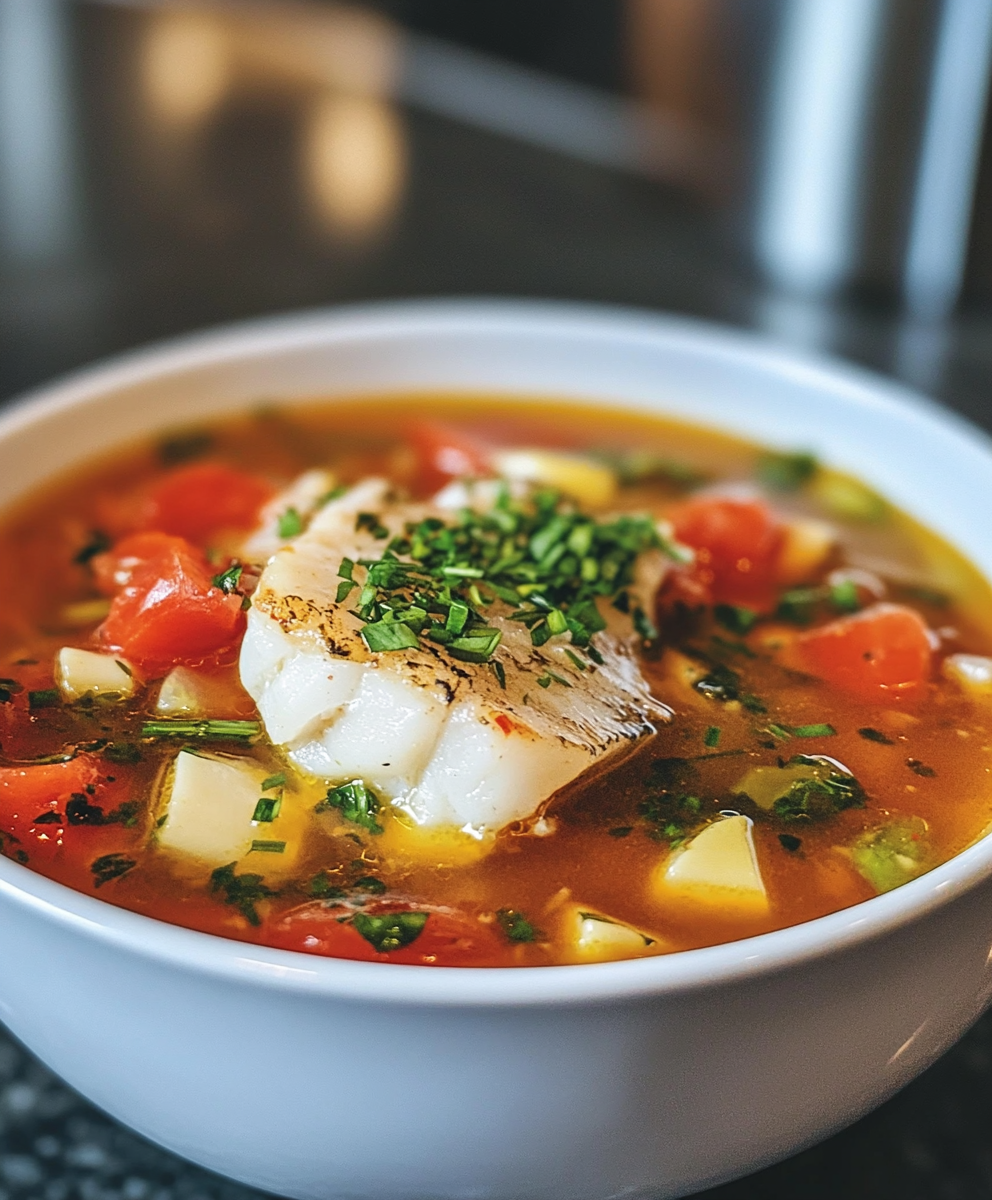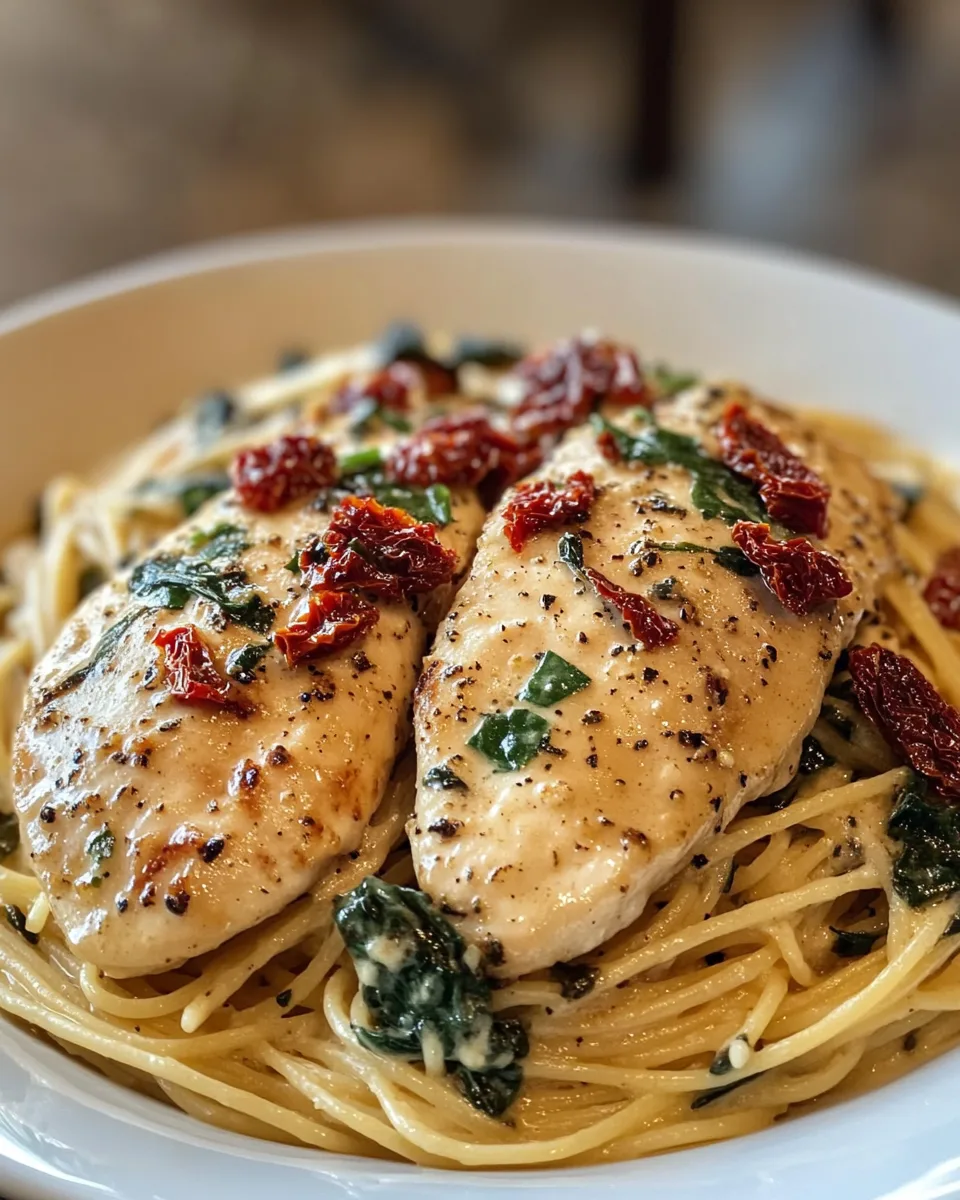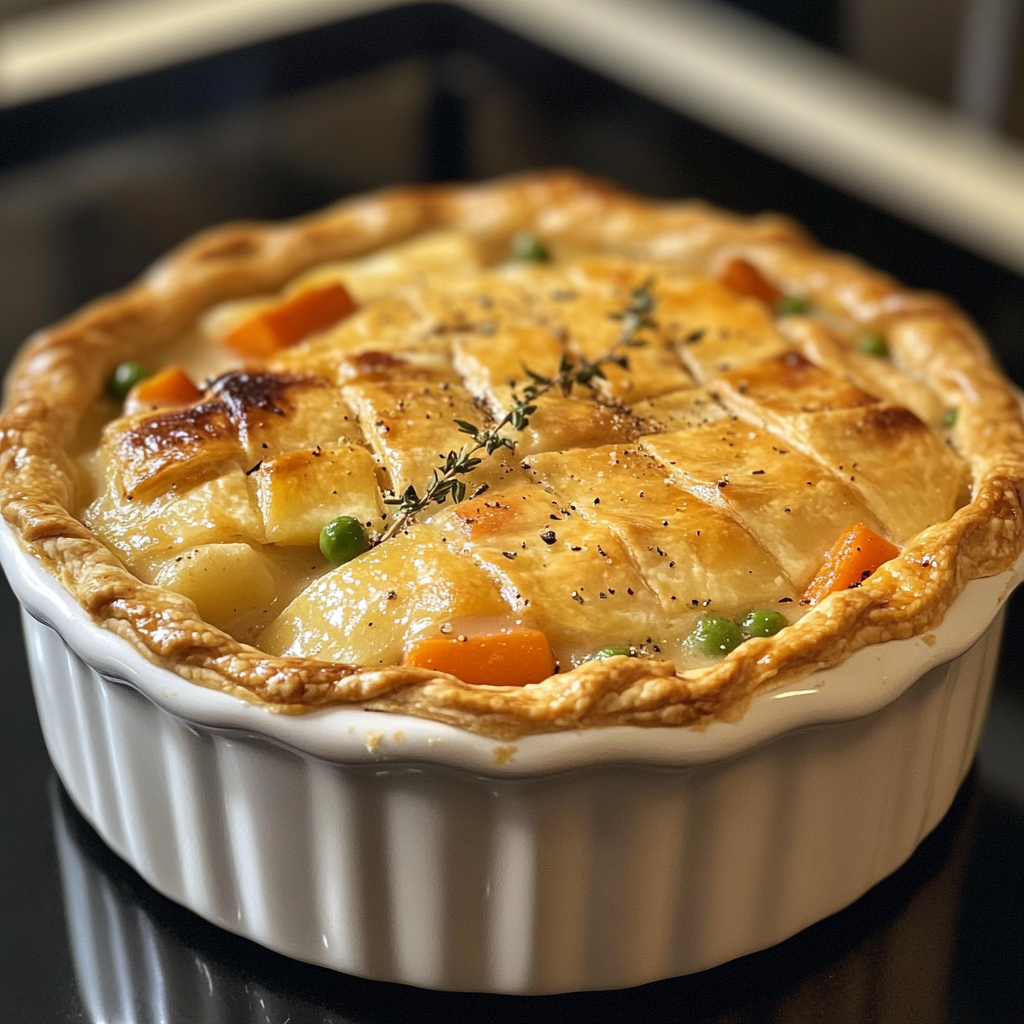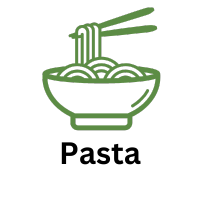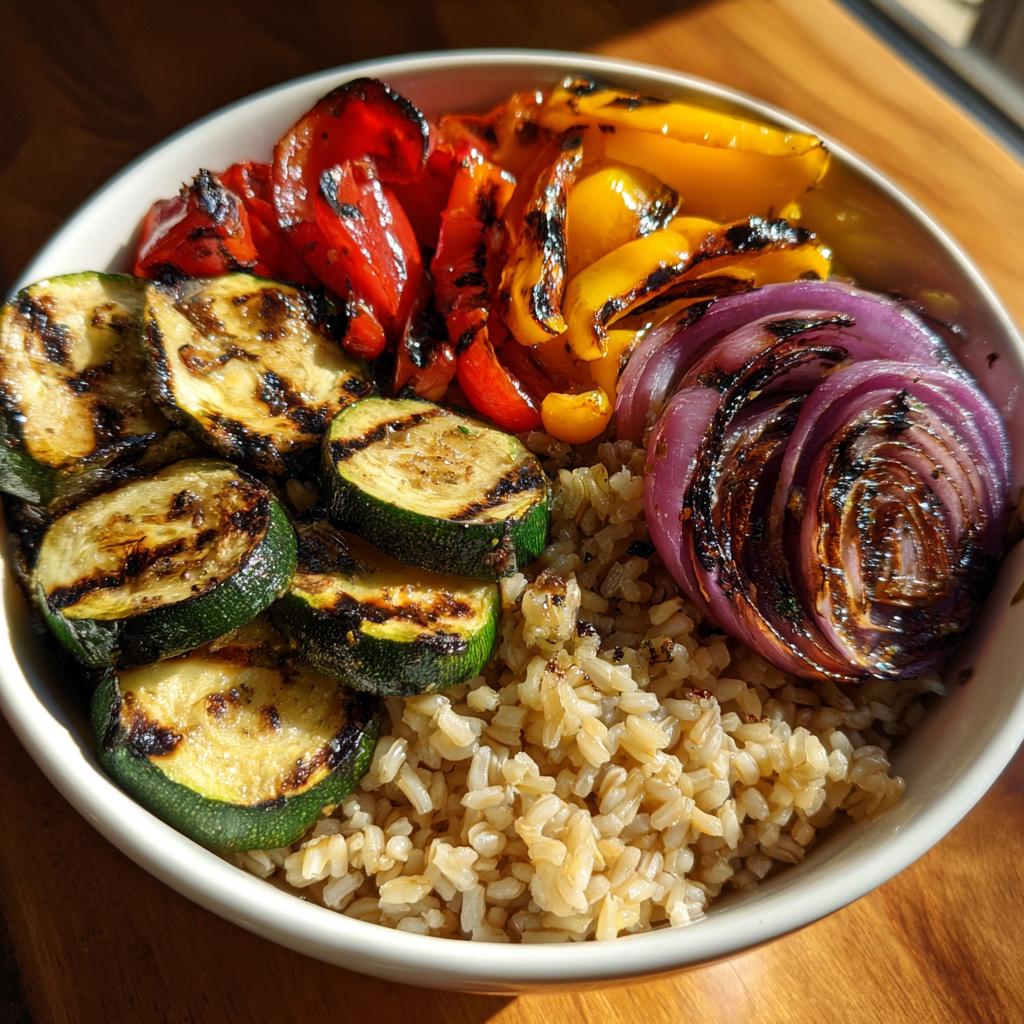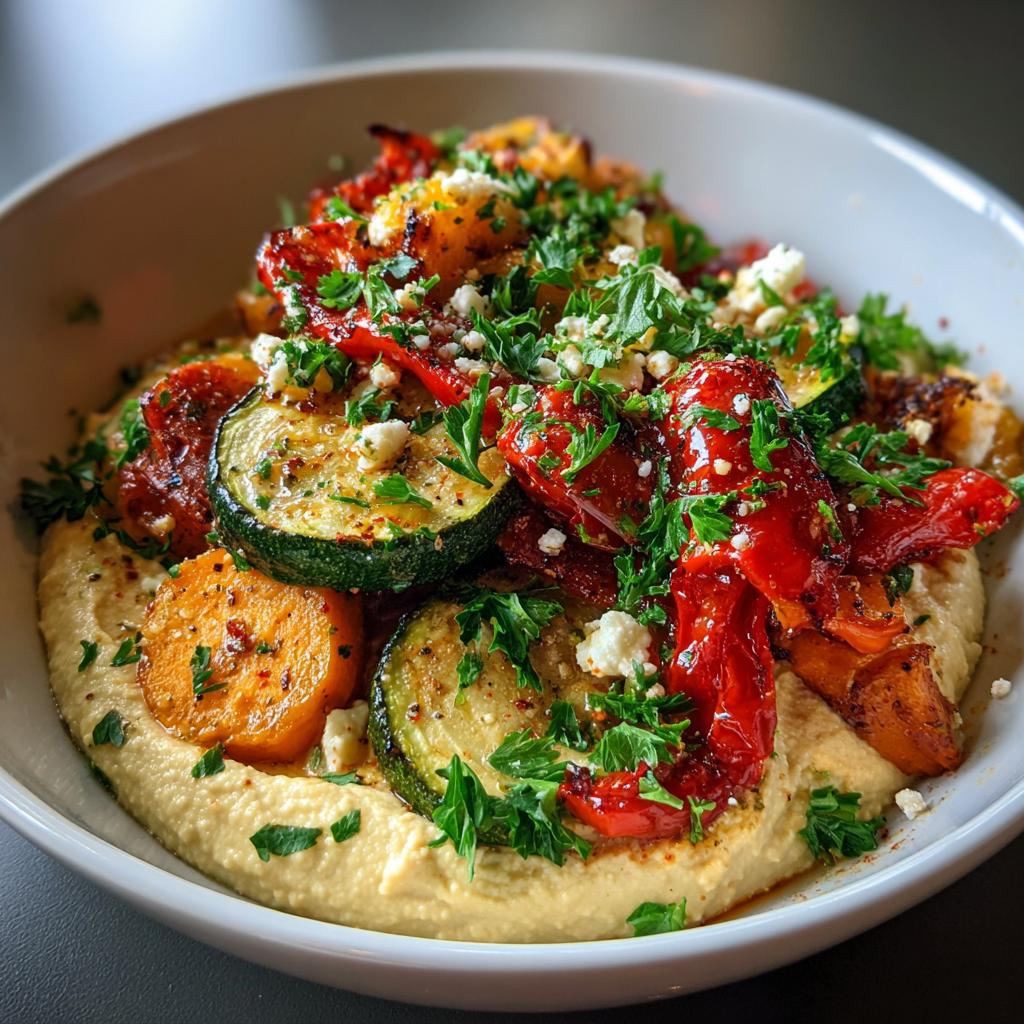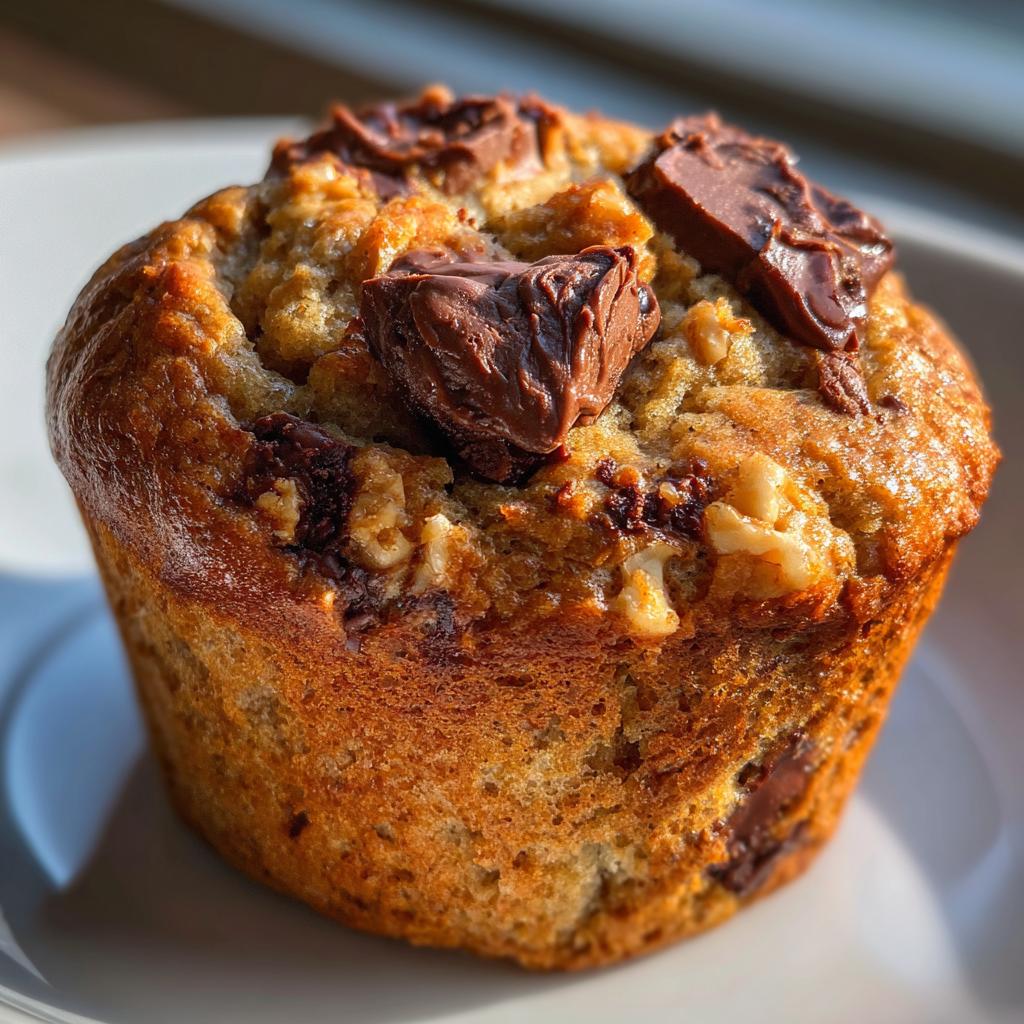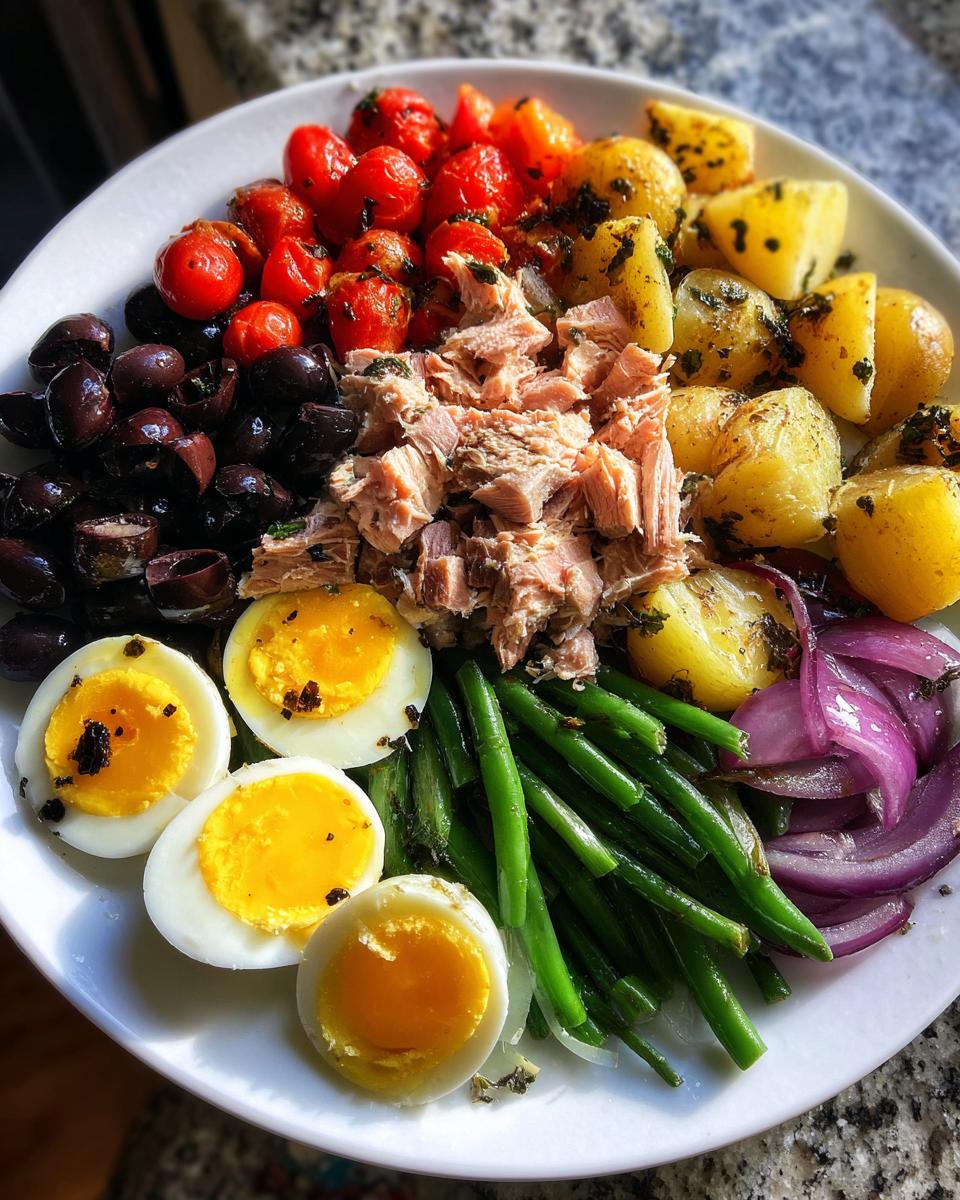Ah, Bouillabaisse! Just saying the name makes my heart flutter with excitement. This delightful dish is a traditional Provençal fish stew that hails from the sunny shores of France. Imagine a warm, fragrant broth filled with tender chunks of fresh fish, succulent shrimp, and plump mussels, all mingling together in a dance of flavors. It’s like a symphony for your taste buds! Bouillabaisse is not just a meal; it’s an experience that transports you to a bustling seaside market, where the scent of the ocean fills the air.
Ingredients for Bouillabaisse Recipe
Essential Ingredients
When it comes to crafting the perfect Bouillabaisse, the ingredients are the stars of the show! Each one plays a vital role in creating that rich, aromatic broth that makes this dish so special. Here’s what you’ll need:
- Fresh fish: I love using snapper, but any firm white fish will do. Aim for about 500 grams, cut into bite-sized chunks. The fish is the heart of the stew!
- Mussels: These little gems add a briny sweetness. You’ll need around 250 grams, cleaned and debearded. I always find it satisfying to watch them open up in the pot.
- Shrimp: About 250 grams of peeled and deveined shrimp brings a delightful sweetness and texture. They cook quickly, so they’re perfect for this dish.
- Fish stock: A liter of good-quality fish stock is essential. It’s the base of our broth, so choose one that’s rich and flavorful.
- Tomatoes: I prefer using 400 grams of fresh diced tomatoes, but a can of diced tomatoes works just as well. They add a lovely acidity to balance the flavors.
- Garlic: Four cloves, minced, for that aromatic kick. Garlic is like the fairy dust of cooking—it makes everything better!
- Saffron: Just a pinch (about 0.5 grams) is all you need. It’s a bit pricey, but it adds a unique flavor and beautiful color to the broth.
- Olive oil: Three tablespoons for sautéing the vegetables. It adds richness and depth to the dish.
- Leeks and fennel: One of each, sliced thinly. They bring a sweet, mild flavor that complements the seafood beautifully.
- Fresh herbs: A handful of chopped thyme and parsley adds freshness. I love the way herbs brighten up the dish!
- Salt and black pepper: To taste, of course! Seasoning is key to bringing out all those wonderful flavors.
- Lemon: For serving, cut into wedges. A squeeze of lemon just before eating elevates the dish to new heights!
Optional Ingredients for Customization
While the essential ingredients create a fantastic Bouillabaisse, don’t hesitate to get creative! Here are some optional ingredients that can add your personal flair:
- White wine: A splash of dry white wine when sautéing the leeks and fennel can add a lovely depth of flavor.
- Other seafood: Feel free to mix in other seafood like clams or squid. The more, the merrier!
- Spices: If you like a bit of heat, consider adding a pinch of red pepper flakes for a spicy kick.
- Crusty bread: While not an ingredient in the stew, serving it with a side of crusty bread or rouille (a garlic mayonnaise) is a must for dipping!
As I gather my ingredients, I can’t help but feel a sense of excitement. Each item tells a story, and together they create a beautiful tapestry of flavors. So, let’s roll up our sleeves and get ready to cook up a storm!
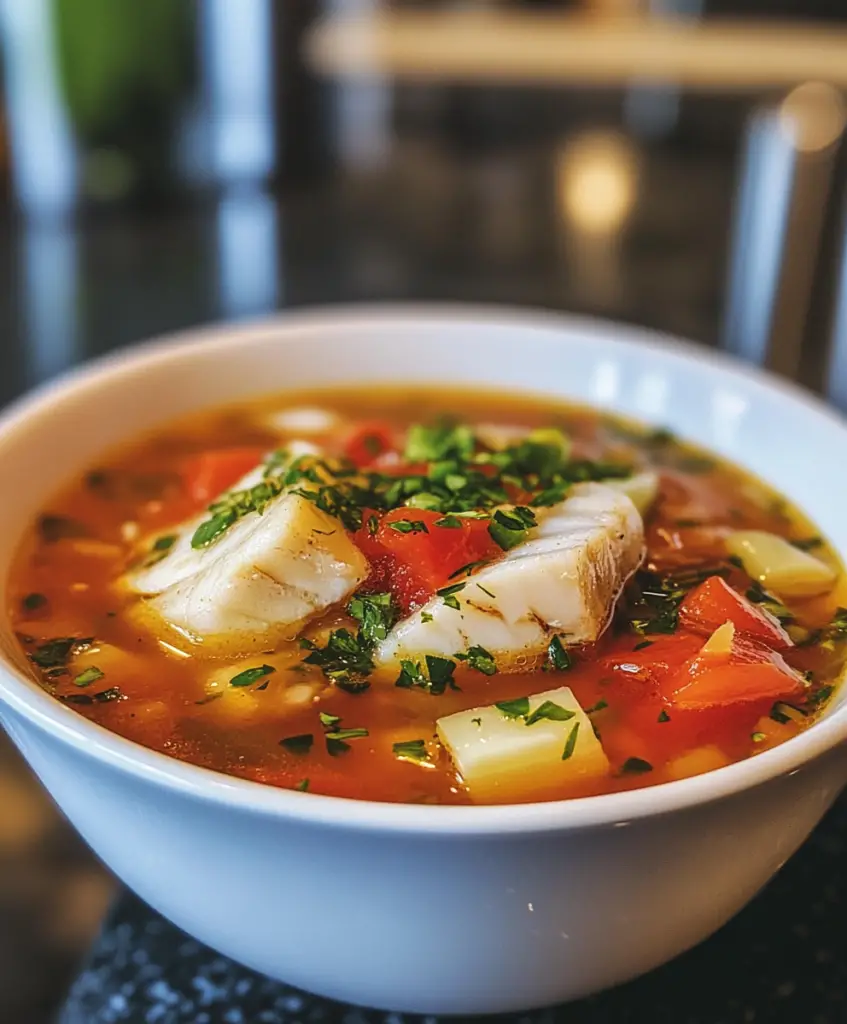
Tools Needed for Bouillabaisse Recipe
Kitchen Equipment
Before diving into the cooking process, let’s gather the essential tools that will help us create our Bouillabaisse masterpiece. Having the right kitchen equipment makes the experience smoother and more enjoyable. Here’s what you’ll need:
- Large pot: A sturdy, heavy-bottomed pot is crucial for simmering the broth evenly. I love using my trusty Dutch oven; it retains heat beautifully and gives the stew a rich flavor.
- Wooden spoon: This is my go-to tool for stirring. A wooden spoon is gentle on the pot and helps me mix the ingredients without scratching the surface.
- Knife and cutting board: A sharp knife and a sturdy cutting board are essential for chopping the vegetables and seafood. I always make sure my knife is sharp; it makes the prep work so much easier!
- Measuring cups and spoons: Accurate measurements are key to a successful Bouillabaisse. I keep my measuring cups and spoons handy to ensure I get the right amounts of each ingredient.
- Colander: This is perfect for rinsing the mussels and draining any excess liquid. I always give them a good rinse to ensure they’re clean and ready to go!
Serving Utensils
Once our Bouillabaisse is ready, it’s time to serve it up! Here are some serving utensils that will make the presentation as delightful as the dish itself:
- Soup ladle: A large ladle is perfect for scooping the Bouillabaisse into bowls. It ensures everyone gets a generous portion of seafood and broth.
- Serving bowls: Choose wide, shallow bowls to showcase the beautiful colors of the stew. I love using my colorful ceramic bowls; they add a cheerful touch to the table!
- Small plates: These are great for serving lemon wedges and any crusty bread or rouille on the side. It’s all about the little details that enhance the dining experience.
- Herb scissors: If you’re using fresh herbs, a pair of herb scissors can make quick work of chopping them. I find it’s a fun way to add a fresh touch right before serving!
With our tools gathered and ready, I can feel the excitement building. Cooking Bouillabaisse is not just about the ingredients; it’s about the entire experience. So, let’s get our hands dirty and start creating this delicious seafood stew!
Step-by-Step Preparation of Bouillabaisse Recipe
Step 1: Preparing the Broth
Let’s kick off our culinary adventure by preparing the broth! I start by grabbing my large pot and heating three tablespoons of olive oil over medium heat. The moment the oil starts to shimmer, I toss in the sliced leeks and fennel. As they sizzle, the kitchen fills with a sweet, inviting aroma that makes my heart sing. I sauté them for about 5-7 minutes until they become soft and translucent, like little jewels in the pot.
Next, I add the minced garlic, stirring it in for about a minute. The garlic releases its fragrant essence, and I can hardly wait to dive into the next step. Then, I pour in the diced tomatoes, letting them mingle with the leeks and fennel. I cook this mixture for another 3-4 minutes, watching as the tomatoes break down and create a beautiful, colorful base for our Bouillabaisse.
Step 2: Adding the Fish and Seafood
Now comes the exciting part—adding the seafood! I carefully pour in the fish stock, bringing the mixture to a gentle simmer. As the broth bubbles, I sprinkle in a pinch of saffron, salt, and black pepper. The saffron adds a touch of luxury, turning the broth a lovely golden hue. I let this simmer for about 10 minutes, allowing the flavors to meld together like old friends catching up over coffee.
Once the broth is ready, I gently add the chunks of fresh fish, mussels, and shrimp. It’s like a seafood party in my pot! I stir everything together carefully, making sure not to break the fish apart. Then, I cover the pot and let it cook for an additional 5-7 minutes. I peek inside occasionally, eagerly waiting for the mussels to open up, revealing their tender treasures.
Step 3: Incorporating Vegetables and Herbs
As the seafood cooks, I can’t help but feel a sense of anticipation. The aroma wafting through my kitchen is simply divine! Once the mussels have opened and the fish is cooked through, it’s time to add the finishing touches. I taste the broth, adjusting the seasoning with a little more salt and pepper if needed. Then, I grab a handful of fresh herbs—thyme and parsley—and chop them up. The vibrant green color adds a fresh pop to the dish!
I stir the chopped herbs into the pot, letting them infuse their flavor into the Bouillabaisse. It’s like adding a sprinkle of magic! The broth transforms into a fragrant elixir, and I can hardly wait to serve it up.
Step 4: Simmering the Bouillabaisse
With everything combined, I let the Bouillabaisse simmer for just a few more minutes. This gentle simmer allows all the flavors to deepen and harmonize. I find myself daydreaming about the sun-soaked shores of Provence, where this dish originated. The anticipation builds as I watch the seafood dance in the bubbling broth, each piece perfectly cooked and ready to shine.
As I stir occasionally, I can’t help but sneak a taste. The broth is rich and flavorful, with a hint of sweetness from the seafood and a touch of brightness from the herbs. It’s a comforting reminder of why I love cooking so much!
Step 5: Final Touches and Serving
Finally, it’s time to serve this beautiful Bouillabaisse! I ladle the steaming stew into wide, shallow bowls, making sure each serving has a generous mix of seafood and broth. The colors are vibrant, and the aroma is intoxicating. I garnish each bowl with a sprinkle of fresh herbs, adding a final touch of elegance.
To elevate the experience, I serve lemon wedges on the side. A squeeze of lemon just before eating brightens the flavors and adds a delightful zing. I can already picture my family and friends gathered around the table, their faces lighting up with joy as they take their first bites. Bouillabaisse is more than just a meal; it’s a celebration of flavors, a moment to share, and a memory in the making!
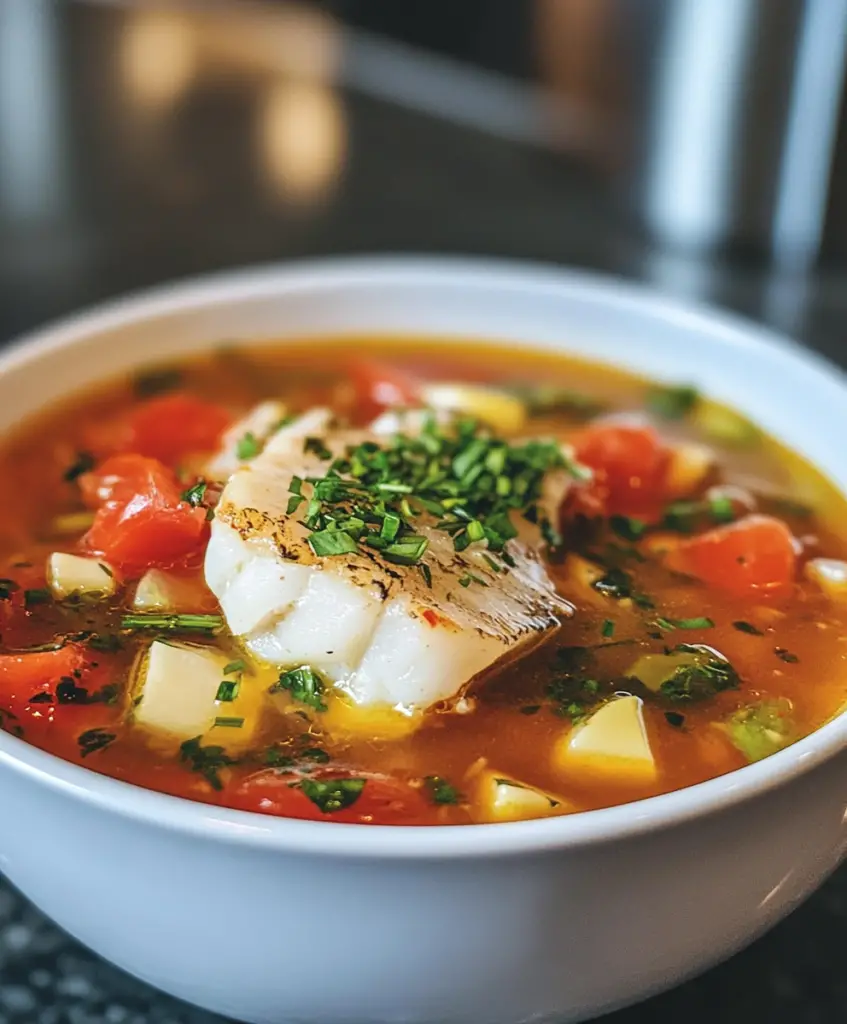
Serving Suggestions for Bouillabaisse Recipe
Traditional Accompaniments
When it comes to serving Bouillabaisse, the right accompaniments can elevate the experience to new heights! I love to keep things traditional while adding my own twist. One of the classic pairings is crusty bread. There’s something magical about tearing off a piece of warm, crusty baguette and dipping it into the rich broth. It’s like a warm hug for your taste buds!
Another delightful addition is rouille, a garlicky mayonnaise that adds a creamy texture and a burst of flavor. I often whip up a quick batch by blending garlic, egg yolk, and olive oil, then adding a touch of cayenne for a little kick. A dollop of rouille on top of your Bouillabaisse is simply divine!
For a refreshing contrast, I like to serve a simple green salad on the side. A mix of crisp greens, cherry tomatoes, and a light vinaigrette complements the richness of the stew beautifully. It’s a perfect way to balance the meal and add a pop of color to the table!
Wine Pairing Recommendations
Now, let’s talk about the perfect wine to accompany our Bouillabaisse. A crisp, dry white wine is my go-to choice. I often reach for a lovely Sauvignon Blanc or a refreshing Vermentino. These wines have bright acidity that cuts through the richness of the stew, enhancing the flavors of the seafood.
If you prefer something a bit bolder, a light-bodied rosé can also be a fantastic option. The fruity notes and refreshing finish make it a delightful pairing with the aromatic broth. I always enjoy pouring a glass and sharing stories with friends as we savor each bite of Bouillabaisse together.
As I set the table, I can’t help but feel a sense of joy. The vibrant colors of the Bouillabaisse, the crusty bread, and the fresh salad create a feast for the eyes. And when the wine is poured, it’s like the final touch on a beautiful canvas. Sharing this meal with loved ones is what makes cooking so rewarding. So, gather your friends and family, and let’s dive into this delicious seafood adventure!
Tips for Perfecting Your Bouillabaisse Recipe
Common Mistakes to Avoid
As I’ve journeyed through the world of Bouillabaisse, I’ve learned a few lessons along the way. Avoiding common mistakes can make all the difference in achieving that perfect bowl of seafood goodness. Here are some pitfalls to watch out for:
- Overcooking the seafood: It’s easy to get caught up in the excitement, but overcooking can lead to rubbery shrimp and fish. I always keep an eye on the clock and check for doneness. The seafood should be tender and just cooked through.
- Using low-quality stock: The fish stock is the heart of the Bouillabaisse. Using a low-quality stock can dull the flavors. I recommend using homemade stock or a high-quality store-bought option. It’s worth the extra effort!
- Skipping the saffron: While saffron can be pricey, it adds a unique flavor and beautiful color to the broth. Skipping it can result in a less vibrant dish. If you can, invest in a small amount; it truly elevates the dish!
- Not seasoning enough: Seasoning is key! I always taste the broth as I go, adjusting the salt and pepper to bring out the flavors. Don’t be shy—seasoning can transform your Bouillabaisse from good to extraordinary!
- Rushing the simmering process: Allowing the broth to simmer for the right amount of time is crucial. This step helps the flavors meld together beautifully. Patience is a virtue in cooking, and it pays off in the end!

Variations to Try
One of the joys of cooking is experimenting with flavors and ingredients. Bouillabaisse is no exception! Here are some fun variations to consider:
- Spicy Bouillabaisse: If you love a bit of heat, try adding a pinch of red pepper flakes or a dash of hot sauce to the broth. It adds a delightful kick that complements the seafood beautifully!
- Vegetarian Bouillabaisse: For a meat-free version, swap the seafood for hearty vegetables like zucchini, bell peppers, and artichokes. Use vegetable stock instead of fish stock for a rich, flavorful broth.
- Asian-inspired Bouillabaisse: Give your Bouillabaisse an Asian twist by adding ginger, lemongrass, and a splash of soy sauce. You can even toss in some tofu for added protein!
- Herb variations: While thyme and parsley are classic, don’t hesitate to experiment with other herbs like basil or dill. Each herb brings its own unique flavor profile to the dish.
- Seafood medley: Mix and match your seafood! Try adding clams, scallops, or even crab for a luxurious touch. The more variety, the more exciting your Bouillabaisse will be!
As I explore these variations, I find that each one tells a different story. Cooking is all about creativity and personal expression, and Bouillabaisse is the perfect canvas for that. So, don’t be afraid to make it your own and enjoy the delicious journey!
FAQs About Bouillabaisse Recipe
What type of fish is best for Bouillabaisse?
When it comes to choosing the right fish for Bouillabaisse, I always recommend going for firm white fish. My favorites are snapper, cod, or halibut. These types hold up well in the broth and provide a lovely texture. You can also use other fish like monkfish or even a bit of salmon for a twist! The key is to select fresh fish that you enjoy, as it will shine through in the final dish. Remember, the fish is the star of the show, so pick something that makes your taste buds dance!
Can I make Bouillabaisse ahead of time?
Absolutely! Bouillabaisse can be made ahead of time, which is one of the things I love about it. You can prepare the broth and add the seafood just before serving. This way, the flavors have time to meld together beautifully. If you plan to make it in advance, I suggest storing the broth separately from the seafood. This helps keep the seafood tender and prevents it from overcooking. When you’re ready to serve, simply reheat the broth and add the seafood for a quick and delicious meal!
How do I store leftover Bouillabaisse?
If you find yourself with leftover Bouillabaisse (which is rare in my house!), storing it is quite simple. Allow the stew to cool completely, then transfer it to an airtight container. It can be stored in the refrigerator for up to two days. When you’re ready to enjoy it again, gently reheat it on the stove over low heat. Just be careful not to overcook the seafood again! If you want to freeze it, I recommend freezing the broth separately from the seafood to maintain the best texture.
Is Bouillabaisse spicy?
Bouillabaisse is not inherently spicy, but it can be customized to suit your taste! The traditional recipe focuses on the rich flavors of the seafood and aromatic herbs. However, if you enjoy a bit of heat, you can easily add a pinch of red pepper flakes or a dash of hot sauce to the broth. It’s all about finding that perfect balance that excites your palate. So, feel free to spice it up or keep it mild—either way, it’s going to be delicious!
Conclusion on Bouillabaisse Recipe
Recap of Key Points
As we wrap up our culinary journey through the world of Bouillabaisse, let’s take a moment to reflect on the key points that make this dish so special. We’ve explored the essential ingredients, from fresh fish and succulent seafood to aromatic herbs and spices. Each component plays a vital role in creating that rich, flavorful broth that warms the soul.
Print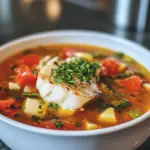
Bouillabaisse recipe: Discover the secrets to perfection!
- Total Time: 1 hour
- Yield: 4 servings
- Diet: Gluten Free
Description
Bouillabaisse is a traditional Provençal fish stew from France, featuring a rich broth filled with fresh fish, shrimp, and mussels, infused with aromatic herbs and spices.
Ingredients
- Fresh fish: 500 grams, cut into bite-sized chunks
- Mussels: 250 grams, cleaned and debearded
- Shrimp: 250 grams, peeled and deveined
- Fish stock: 1 liter
- Tomatoes: 400 grams, diced
- Garlic: 4 cloves, minced
- Saffron: 0.5 grams
- Olive oil: 3 tablespoons
- Leeks: 1, sliced thinly
- Fennel: 1, sliced thinly
- Fresh herbs: a handful of chopped thyme and parsley
- Salt and black pepper: to taste
- Lemon: for serving, cut into wedges
Instructions
- Heat olive oil in a large pot over medium heat and sauté leeks and fennel until soft.
- Add minced garlic and cook for an additional minute.
- Stir in diced tomatoes and cook until they break down.
- Pour in fish stock and bring to a gentle simmer, adding saffron, salt, and pepper.
- Add fresh fish, mussels, and shrimp, stirring gently and cover to cook for 5-7 minutes.
- Once seafood is cooked, add chopped herbs and adjust seasoning if necessary.
- Let the Bouillabaisse simmer for a few more minutes to deepen flavors.
- Serve in bowls, garnished with fresh herbs and lemon wedges on the side.
Notes
- Overcooking seafood can lead to a rubbery texture.
- Use high-quality fish stock for the best flavor.
- Don’t skip the saffron for its unique flavor and color.
- Season the broth well to enhance flavors.
- Allow the broth to simmer adequately for flavor development.
- Prep Time: 30 minutes
- Cook Time: 30 minutes
- Category: Main Course
- Method: Stovetop
- Cuisine: French
Nutrition
- Serving Size: 1 bowl
- Calories: 350
- Sugar: 5g
- Sodium: 800mg
- Fat: 10g
- Saturated Fat: 1.5g
- Unsaturated Fat: 8.5g
- Trans Fat: 0g
- Carbohydrates: 30g
- Fiber: 4g
- Protein: 30g
- Cholesterol: 150mg
Keywords: Bouillabaisse, fish stew, seafood, French cuisine, Provençal recipe


